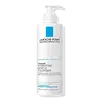What's inside
What's inside
 Key Ingredients
Key Ingredients

No key ingredients
 Benefits
Benefits

 Concerns
Concerns

 Ingredients Side-by-side
Ingredients Side-by-side

Water
Skin ConditioningGlycerin
HumectantHydrolyzed Soy Protein
HumectantBambusa Arundinacea Stem Extract
Skin ConditioningPEG-40 Hydrogenated Castor Oil
EmulsifyingPentylene Glycol
Skin ConditioningHydrolyzed Cottonseed Protein
Skin ConditioningCitrus Medica Limonum Fruit Extract
Skin ConditioningPlantago Major Leaf Extract
Skin ConditioningKrameria Triandra Root Extract
Skin ConditioningLavandula Angustifolia Oil
MaskingLitsea Cubeba Fruit Oil
MaskingCarbomer
Emulsion StabilisingButylene Glycol
HumectantSodium Hydroxide
BufferingCitric Acid
BufferingDisodium EDTA
Phenoxyethanol
PreservativeSorbic Acid
PreservativePotassium Sorbate
PreservativeCitral
PerfumingLinalool
PerfumingLimonene
PerfumingWater, Glycerin, Hydrolyzed Soy Protein, Bambusa Arundinacea Stem Extract, PEG-40 Hydrogenated Castor Oil, Pentylene Glycol, Hydrolyzed Cottonseed Protein, Citrus Medica Limonum Fruit Extract, Plantago Major Leaf Extract, Krameria Triandra Root Extract, Lavandula Angustifolia Oil, Litsea Cubeba Fruit Oil, Carbomer, Butylene Glycol, Sodium Hydroxide, Citric Acid, Disodium EDTA, Phenoxyethanol, Sorbic Acid, Potassium Sorbate, Citral, Linalool, Limonene
 Reviews
Reviews

Ingredients Explained
These ingredients are found in both products.
Ingredients higher up in an ingredient list are typically present in a larger amount.
Disodium EDTA plays a role in making products more stable by aiding other preservatives.
It is a chelating agent, meaning it neutralizes metal ions that may be found in a product.
Disodium EDTA is a salt of edetic acid and is found to be safe in cosmetic ingredients.
Learn more about Disodium EDTAGlycerin is already naturally found in your skin. It helps moisturize and protect your skin.
A study from 2016 found glycerin to be more effective as a humectant than AHAs and hyaluronic acid.
As a humectant, it helps the skin stay hydrated by pulling moisture to your skin. The low molecular weight of glycerin allows it to pull moisture into the deeper layers of your skin.
Hydrated skin improves your skin barrier; Your skin barrier helps protect against irritants and bacteria.
Glycerin has also been found to have antimicrobial and antiviral properties. Due to these properties, glycerin is often used in wound and burn treatments.
In cosmetics, glycerin is usually derived from plants such as soybean or palm. However, it can also be sourced from animals, such as tallow or animal fat.
This ingredient is organic, colorless, odorless, and non-toxic.
Glycerin is the name for this ingredient in American English. British English uses Glycerol/Glycerine.
Learn more about GlycerinWater. It's the most common cosmetic ingredient of all. You'll usually see it at the top of ingredient lists, meaning that it makes up the largest part of the product.
So why is it so popular? Water most often acts as a solvent - this means that it helps dissolve other ingredients into the formulation.
You'll also recognize water as that liquid we all need to stay alive. If you see this, drink a glass of water. Stay hydrated!
Learn more about Water